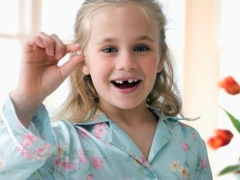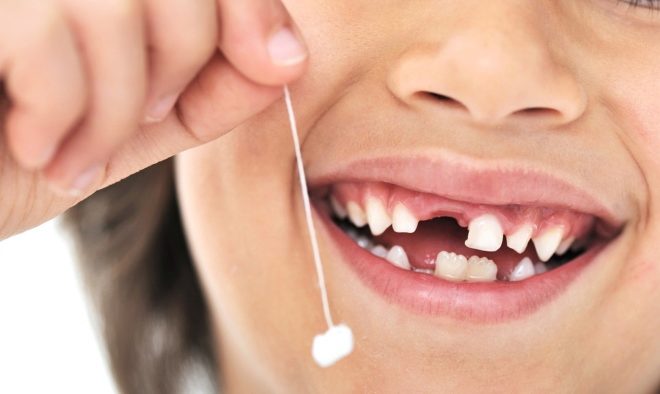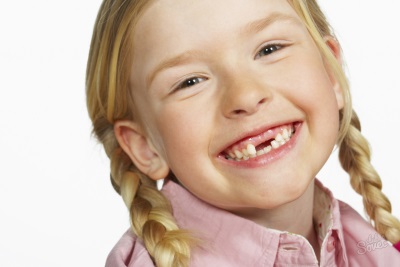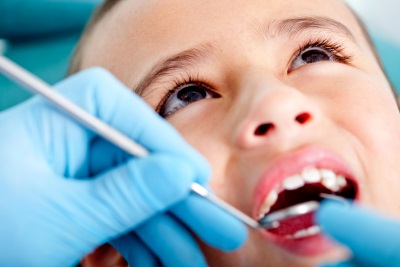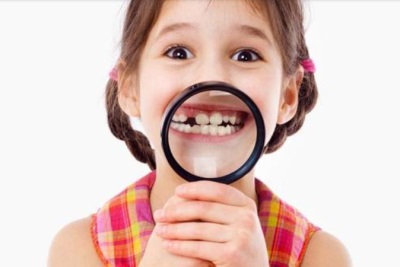Removal of milk and molars in children
Tooth extraction can be a real problem for the child and for his parents, because the majority of babies suffer medical procedures and are afraid of dental instruments. However, sometimes you can’t do without removal, so parents should know when it’s really worth deleting, how the procedure will go, how to prepare the child and what difficulties there are after removal.
Indications
To remove a tooth in childhood is recommended if:
- Increased mobility. It happens that he has been reeling in a child for a long time, causing severe discomfort in the crumbs, but he will not fall out on his own. Sometimes it prevents the baby from even eating and talking.
- Increased mobility in a permanent tooth due to periodontitis.
- Milk tooth is affected by deep caries. When the risk of an infection to a permanent tooth increases, the best way out is to remove a sick baby tooth, even if the loss is still far away, for example, a child is only 2 years old or 5 years old.
- The deep form of caries struck a permanent tooth, and its treatment is impossible.
- The root of the baby tooth is destroyed. This situation directly threatens the molar germ, as a result of which it can not only erupt already infected, but also die.
- Milk or molar is traumatized. Its sharp fragments can damage the gums, but even if there are no sharp parts, when broken, it is more susceptible to infection by bacteria causing caries.
- Fallout is delayed. This can cause problems with the eruption of the permanent tooth and the formation of the jaw. If the molar tooth is cut through, several months have passed, and the milky is firmly held in the gum, it should also be removed.
- Permanent teeth grow crowded, and to improve the bite requires the removal of one of them.
- An acute inflammation developed in the oral cavity. This can cause the removal of the baby tooth, for example, at the age of 4 years, and molars. The reason for the removal in this case may be phlegmon, periodontitis, fistula in the gums, cyst suppuration and some other diseases. At the same time, before removing the acute inflammation is removed.
- The doctor recommends the removal of the beginnings of wisdom teeth in children because of the difficulty of their eruption or lack of space. This procedure is performed at the age of 15-16 years, while their roots have not yet formed.
- An anomaly of development was revealed, in which their number is more than the norm. Extraction of a complete tooth in a child in such a situation is important for proper development of the jaw.
Contraindications
Removal is not carried out if:
- The child has a sore throat, pneumonia or other acute illnesses.
- An acute inflammatory process, such as stomatitis or candidiasis, is found in the baby’s mouth.
- Next to the tooth is a vascular or malignant tumor.
Features of removal of milk teeth
The procedure is influenced by such factors as the growing jaw of the child, mixed bite and the presence of a permanent germ under the milk tooth. Often, the manipulation is performed by the dentist without any difficulties, but must be done very carefully due to short roots. If you act carelessly, the doctor may damage the permanent tooth.
How to remove at home?
If the tooth is about to fall out and it needs only a little help, proceed as follows:
- Treat the gum with an anesthetic agent.
- Take a small piece of clean gauze or cloth, clasp the tooth and roll it sideways. He should move freely.
- Pull it out and gently pull it out. If the tooth is not separated with ease, most likely, it is too early to remove it yourself.
- Pinch the gum area after removing a piece of clean gauze.
- Take the baby away from the bleeding by showing a crumbled fallen tooth.
- Check to see if there are any tooth pieces in the gum. In most cases, no fragments remain, and sometimes in its place the tip of a permanent tooth, ready for eruption, is already visible.
It is best for the loose baby tooth to be removed by the child. Have your child move his tongue, this will speed up the process of falling out. If something alerted you, for example, some part remained in the gum, go with the child to the dentist.
See the following video for home removal example.
Features of the removal of chewing milk teeth
If a child has to remove a chewing tooth, it may worsen chewing food. The child will chew food with incisors, which increases the risk of grinding and damage. In turn, reducing the chewing load on the jaw in the place where the tooth is removed, will not be enough to stimulate the chewing muscles, which will affect the growth of permanent teeth. This happens if the chewing teeth are removed much prematurely, for example, at 3 years.
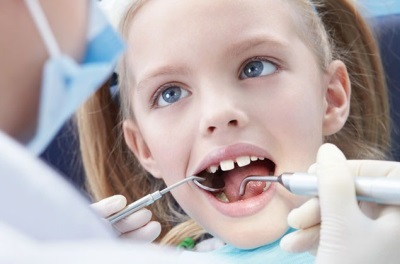
Under general or local anesthesia?
Pain relief during tooth extraction is represented by several options. The most common is local anesthesia using an injection. In this case, the child is injected with an anesthetic in the gum with a syringe injection, after which the place of manipulation becomes numb.
Often resorted to and application of anesthesia, in which the gum is treated with a gel or spray with anesthetic action. Often, such an anesthetic has a pleasant fruity taste, and the product is quickly absorbed into the gums. Such anesthesia is sufficient for a very loose baby tooth, but more often an application is used for preliminary anesthesia of the gums, then to give an injection with a long-lasting anesthetic.
General anesthesia in the treatment of children's teeth is rarely used. For general anesthesia resorted to:
- Intolerance funds used for local anesthesia.
- Nervous or mental illness in a child.
- Severe inflammatory processes when local anesthesia is ineffective.
Psychological training
Before you go with the child to the dental office, it is important to prepare the child psychologically and adjust that the removal process will be easy and fast.
- Do not discuss the reason for removal with the child, and also do not use complex dental terms in conversation.
- Do not scare your daughter or son with a dentist.
- Try not to worry yourself that the excitement is not transmitted to the baby.
- You can take the child with you when you treat your teeth so that the crumb will be convinced of the safety of the manipulation.
- Focus on the fact that the child during the procedure will show courage and be brave.
- Do not fool the kid that the manipulation will be completely painless. It is better to focus on the fact that the pain will be insignificant and will quickly pass.
Removal procedure
- The forceps are applied to the crown so that the tooth is fixed without excessive pressure.
- The dentist performs the lux (so called the dislocation of the tooth).
- The tooth is derived from the hole (this manipulation is called traction).
- The dentist makes sure that all the roots are removed.
- The hole is closed with a gauze pad.
Possible problems after removal
Gum hurts
Minor soreness after manipulation is the norm and should not cause concern. In this case, the pain should gradually decrease. If the pain is long and very pronounced, the child should be examined by a dentist.
Swollen cheek
A slight swelling on the first or second day after removal is considered normal. If the swelling is pronounced and increases, you should immediately consult a doctor.
Swollen lip
This condition may occur when a child bites his lip after removing a tooth, but does not feel this because of anesthesia. As a rule, puffiness passes independently in several days. If it grows, it is important to show the baby to the doctor.
Temperature rise
A small increase on the first or second day after deletion is acceptable. When the temperature rises above + 38 ° C, the dentist should examine the child, as this may be evidence of infection entering the well.
Prolonged bleeding
Blood is released after the removal of milk teeth in a small amount and not for long. In order for the blood to stop more quickly, the child should bite a gauze pad. The situation with increased bleeding is more common when removing a permanent tooth. It may take a long time until a blood clot forms. With long bleeding and the release of red blood of the child should immediately show a doctor.
Bias
Sometimes, due to the premature removal of a tooth or the removal of several teeth at once, others shift, which threatens the child with bite problems. To prevent displacement using special tools.
Speech problems
If the child loses one of the front teeth prematurely, this may affect his diction and will require correction from a speech therapist.
Tips
- If the child has an allergy to drugs, it is necessary to warn the dentist before the manipulation.
- It is better to go with the child to the doctor to remove the tooth in the morning, when the baby is not yet tired and not hungry.
- Be near the child during removal so that the crumb feels your support.
- Until the anesthesia is complete, the child should not be given any food.
- Do not rinse your mouth for 3 days after removal so that the clot that has formed in the well does not move.
- The first three days after removal, do not give your child very hot meals. The use of dairy products is also not recommended.
- The area where the tooth is removed, you can not warm or put on it any compresses.
